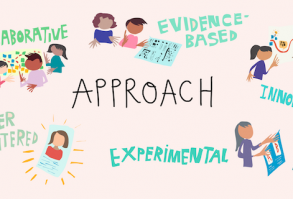I participated in a workshop of Paul Seligson ,the writer of English File, last year. The workshop was about how to use texts in coursebooks effectively in classes. I took some notes which may give you ideas about the usage of texts during class time.
Here is the list of suggestions for you;
- On arrival to class or when moving into reading, sing/play/loop connected lines from a song, movie clip, short ad which connects with topic to contextualize. Students have to tell you the link to the text.
- Open schemata via general knowledge, e.g. quick quiz about topic, What do you know about x? (via KWL, Know already/Want to know/Learned chart), or have studentst write their own questions.
- Speculate on text content( topic, arguments, lexical sets, words) using the title, design, layout, organization, photo, knowledge/photo of author, cartoon, quote, a few phrases from the text on the board…
- Show an initial/randon excerpt; e.g. the first/ last lines of each paragraph, or read e.g the ending and guess what comes before, or the middle to guess the start &finish
- Flash text at them for (20) seconds, then have pairs remember what they can.
- Have students quickly guess answers to comprehension-type questions as a way into text, or encourage more thoughtful prediction ( very likely, likely, not very likely, very unlikely)
- Board 3 sentences from the text & 2 you made up. Students guess which (3 out of 5) will be in text, read&check.
- Before a class with a longer text, google & bring to class a quote/song line you like about “reading” or about the forthcoming topic or containing the structure presented in the text.
- Repeatedly pause and predict, to check expectations. ‘ What do I expect/hope will come next? ‘ or ‘ summarize to partner what you just read / imagine what comes next’
- Try to keep to your stated time limits to frame the activity for each individual. Avoid falling into the ‘two more minutes syndrome!’
- Try different reading experiences, e.g give choices of how to read ( alone / in pairs , against clock or in own time, skim once then re-read carefully, etc.)
- Make reading more visible in class e.g. fingers on text, books up you can see their eyes, color the parts of the text that provide answers to questions.
Post Reading Tips for Reading Texts
- As well as the usual language focus and summarize to test comprehension, jumble/ re-order race, gap filling, topic sentence headings, dramatisation, roleplay, discuss, debate etc.
- Encourage students to give their emotional reaction to the text e.g. ‘ What were you really thinking while reading? Enjoyable? Any surprises? Is this the sort of text you’d choose to read in Turkish?
- Pairs/Groups/Teams write a few comprehension or True-False questions based on the text for others.
- Encourage critical thinking, speculate: Where might it come from? Is the author male or female? Why? , Do you agree with the conclusion? Does she or he have any kinds of agenda? Do you think the text or the story is real? Could you give a better title?
- Have different pairs ‘tweet’ the content of each paragraph in e.g. 25 words.
- Have plenty to read around the school, on walls, even ceilings! students’ own work is best displayed in corridors or online rather than left for weeks on class walls, where it can only be read from close up. Classroom wall displayss should largely teach language rather than decorate, using fonts large enough to be read from anywhere in room. Show quotes, slogans, song lines, classroom phrases, ‘thought for the day!, favourite pages from books, cartoons, even word lists.
- Don’t let the reading element of classes drag or demotivate, nor kill texts in the name of inductive grammar.

Thanks for reading this post.
Do not hesitate to contact me if you require further information.




